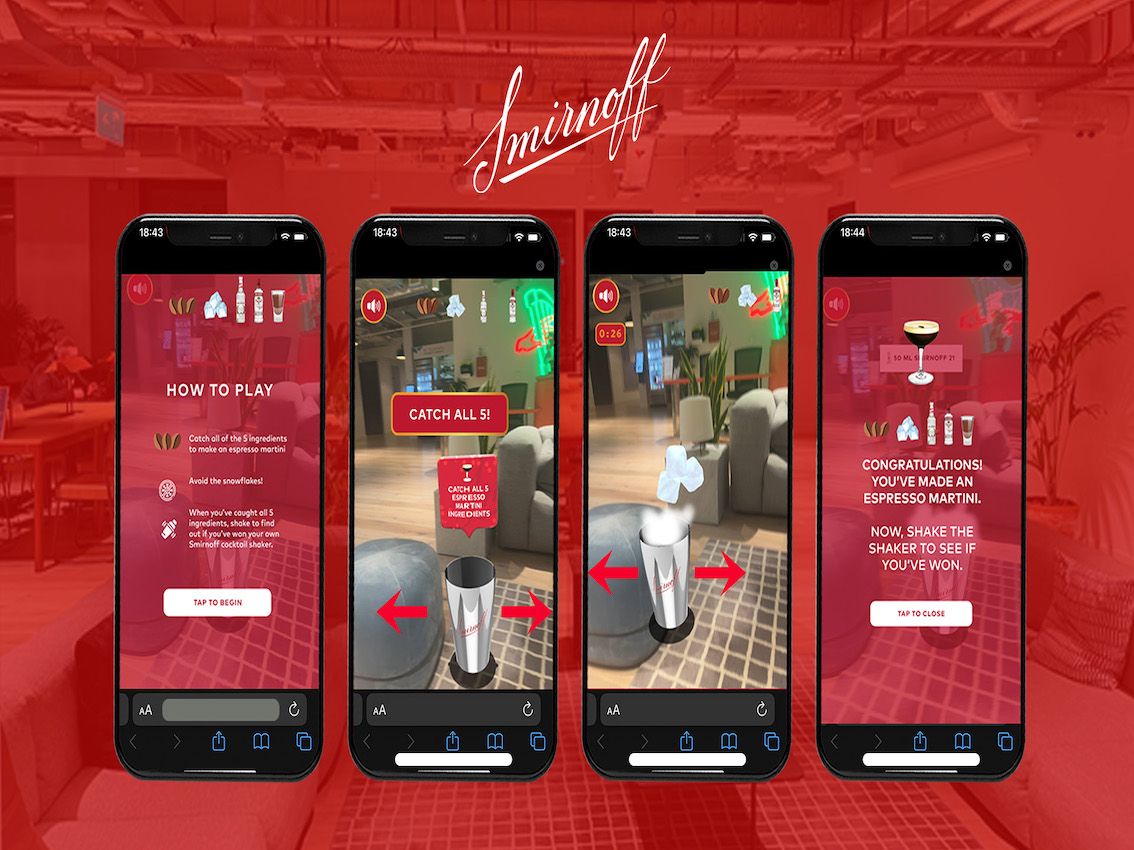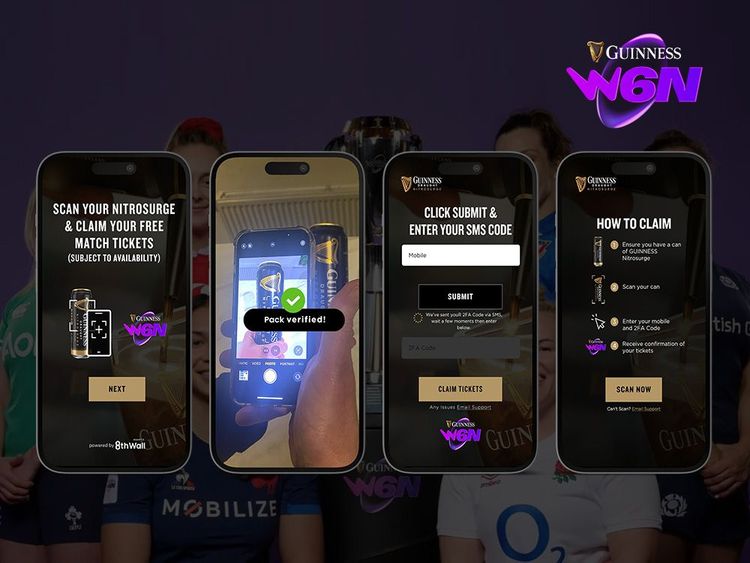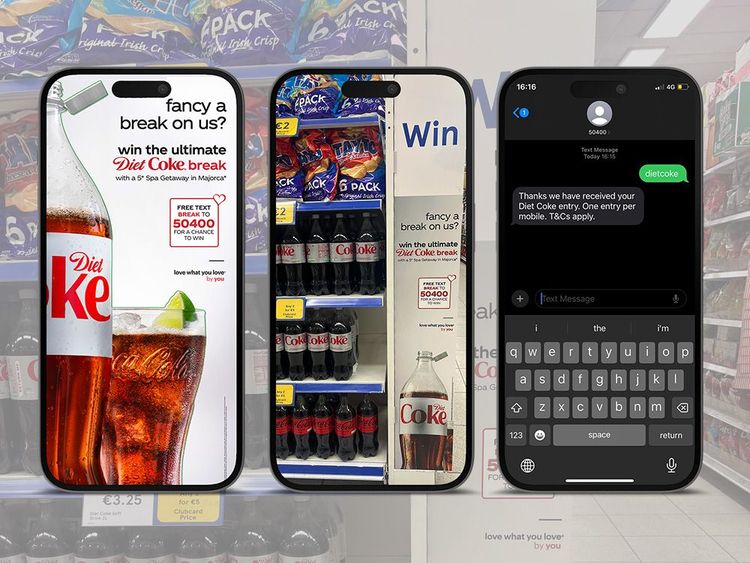Augmented Reality Marketing & Promotions
Augmented reality promotional mechanics and activations can surprise and delight your customers with engaging, eye catching 3D experiences, games, prize promotions, treasure hunts and other fun immersive mechanics. AR Mechanics also work on the web with no app required. We also create AR experiences, like the Smirnoff one here, that aid product understanding and encourage purchase.

About Augmented reality promotional mechanics and activations can surprise and delight your customers with engaging, eye catching 3D experiences, games, prize promotions, treasure hunts and other fun immersive mechanics. AR Mechanics also work on the web with no app required. We also create AR experiences, like the Smirnoff one here, that aid product understanding and encourage purchase.
Overview:
Social and ‘Web-AR’ experiences can add a fun, immersive, promotional and also educational element to print, packaging, point of sale, email, events, website/comms and of course social media.
Key Considerations for Set Up and costing
The best AR campaigns work best when they are integrated seamlessly into a brands wider communications strategy.
This might be mean doing a simple AR experience at a match or event or on packaging or something but understanding where and how people will access the experience goes a long way towards ensuring that the experience is tailored to the brief, target market and context. An AR experience that works at home may not work in a mucky, noisy field with a poor mobile signal.
Here are some considerations:
What is the role of AR ( brand awareness, encourage purchase, amplify existing comms etc)
What is the business problem that AR will solve (example: AR is great on packaging, AR is great at sampling and product and experience visualisation and AR is great at ‘show don’t tell/preach’ )
Who is the target audience
Where will they discover the experience ( on pack, email, in-store, at event, comms/ads etc)
Why will they care? ( e.g. the experience will enable them to scan a pack and get 20% off or the experience will deliver amazing, share-able content that enhances their night out)
What is the CTA? How will they be able to access the experience? ( e.g. click here to access or scan QR or search for this)
What creative assets are available? What do we need to do in 2D, 3D etc – do we have any existing assets to reduce costs? Do we have any sound effects or identities that we can re-use?
What platforms? e.g. on the web, in app, in social
What is the file size of the experience? Will there be a good mobile signal to access it? Will it only work on the latest phones on Wi-Fi?
Is there a data capture opportunity? Are there prizes/rewards? How do people redeem? Are there retail partners involved with different prize funds?
How can people share it?
Are there any IT security requirement’s? Who will approve this?
Key Benefits
Augmented Reality ( AR) makes existing media work harder and provides an interactive, immersive layer to print, packaging, OOH, social, TV email etc
AR provides an immersive way to remotely/digitally sample products, experiences services etc.
AR improves brand awareness – AR experiences are memorable and shareable
AR is relevant to younger shoppers and consumers especially gen Z, gen snapchat
Types of AR experiences
AR experiences tend to be either:
-tracked onto something ( your face, packaging)
or
-magically appear in your world view ( on your kitchen table, in the sky, on the ground in front of you)
In terms of categories they tend to take the form of:
Lenses on Places: e.g.,. see how this building looked in 1801 point your phone here
Filters on faces: get your game face on for the match, try our filter now, catch the skittles in your mouth
Overlays on Print, POS & Packaging: scan your pack now to see the products come alive and win instantly
Real world objects – see how our couch looks in your living room
Games and gamification: dance with our brand character and share to win, shake your 3D tic-tacs to win
Avatars and holograms: click to place your 3D Snoop Dog hologram– if he dances you win, if he’s angry, no dice!
Portals and treasure hunts: visit the
The challenge for marketers is to take this existing groundswell of usage and translate it into something promotional
3D game piece/object: 3D ‘brand relevant’ object that appears in the real world ( via the camera) : e.g. shake the Smirnoff cocktail shaker to win, or open the Captain Morgan treasure hunt to win instantly
Portal: 3D ‘brand relevant’ portal that appears in the real world: e.g. walk through the Hendricks secret garden to win instant prizes or find the golden key in the car dealership to unlock the car and win
Open Camera to View Vertical/Horizontal experience You visit a URL ( via QR code, ad, email link etc) and an experience appears in your ( vertical) camera view and you interact with that to win /lose
Examples:
Captain Morgan created a 3D safe vault that you place on your wall – crack the code to open and win/lose
Robinsons created a treasure hunt where shoppers had to find ingredients nearby to win
Guinness created a 3D beer mat that you place on your pub table – peel it back to win/lose instantly
You visit a URL ( via QR code, ad, email link etc)
Scan to win simple ( Scan the logo or pack to reveal a prize, voucher, quiz)
Example: Guinness
Scan to win peel reveal ( scan the logo, win/lose message appears on the label)
Scan to win Scratch card
Spin the wheel – this is where we take the tried and tested
Mini Games – these are where we take traditional game formats like kick the ball, catch the object, endless runner, shooter games etc but these are enhanced when transposed onto the real world, packaging, print etc.
Portals – these are a bit like treasure hunts except instead of using the real world as your canvas you enter walk through a portal to find and win a prize or get a voucher or something.
Services We Offer
undefined
undefined, undefined undefined
Related Articles
How can we help?
Get in touch and we will see how we can create engaging promotional mechanics and digital activations.





